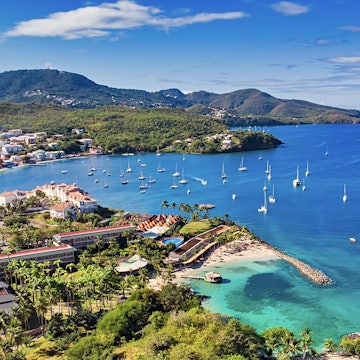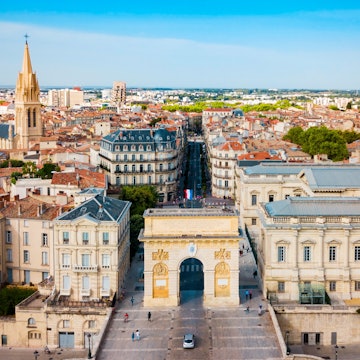
10 reasons why winter is the best time to visit the Côte d’Azur

Nov 3, 2025 • 9 min read

Villefranche-sur-Mer in Côte d'Azur. Faikun Sailor/Shutterstock
While the Côte d’Azur is today one of the world’s most famous and glamorous summer destinations, the Mediterranean-fronting region – and especially its unofficial capital, Nice – first drew visitors for winter getaways.
Indeed, the entire stretch of coast enjoys remarkably mild weather throughout the cooler months, with plenty of sunshine and lots to do. And since lower temperatures mean fewer crowds, you’ll find a much more local atmosphere, as local residents return starting in September from their own summer vacations.
Coastal jade-green palms are a short drive away, as are dramatic red-stone gorges and the snowy, Alpine landscape of the Mercantour National Park. There aren’t many places where you can swim in the morning in the sea then ski in the afternoon. In that sense, the Côte d’Azur in winter has it all.
1. Gaze up at the stars
Peering down over many of the cities along the Côte d’Azur are the weathered, old-world domes of astronomical observatories. The most famous of them, in Nice, features a dome (recently restored) designed by Gustave Eiffel and buildings by Charles Garnier (of Opéra de Paris fame). This working laboratory, full of astronomers and astrophysicists hard at work, is open to the public for tours. Sometimes, local astronomers –of which there are many – will bring their telescopes down to the Promenade des Anglais for passersby to view the moon and planets.
In winter, when colder air holds less vapor, the skies tend to be clearer and less hazy, and the stars and planets appear brighter. Inland Mercantour National Park is a Dark Sky Reserve that also includes the Calern Plateau, another observatory site that holds an open night, La Nuit des Coupoles Ouvertes (which happens once every two years, the next in 2026). Not far away, the Astrorama in Col de Vence offers Open Sky nights with a planetarium, telescopes and talks open to the general public.
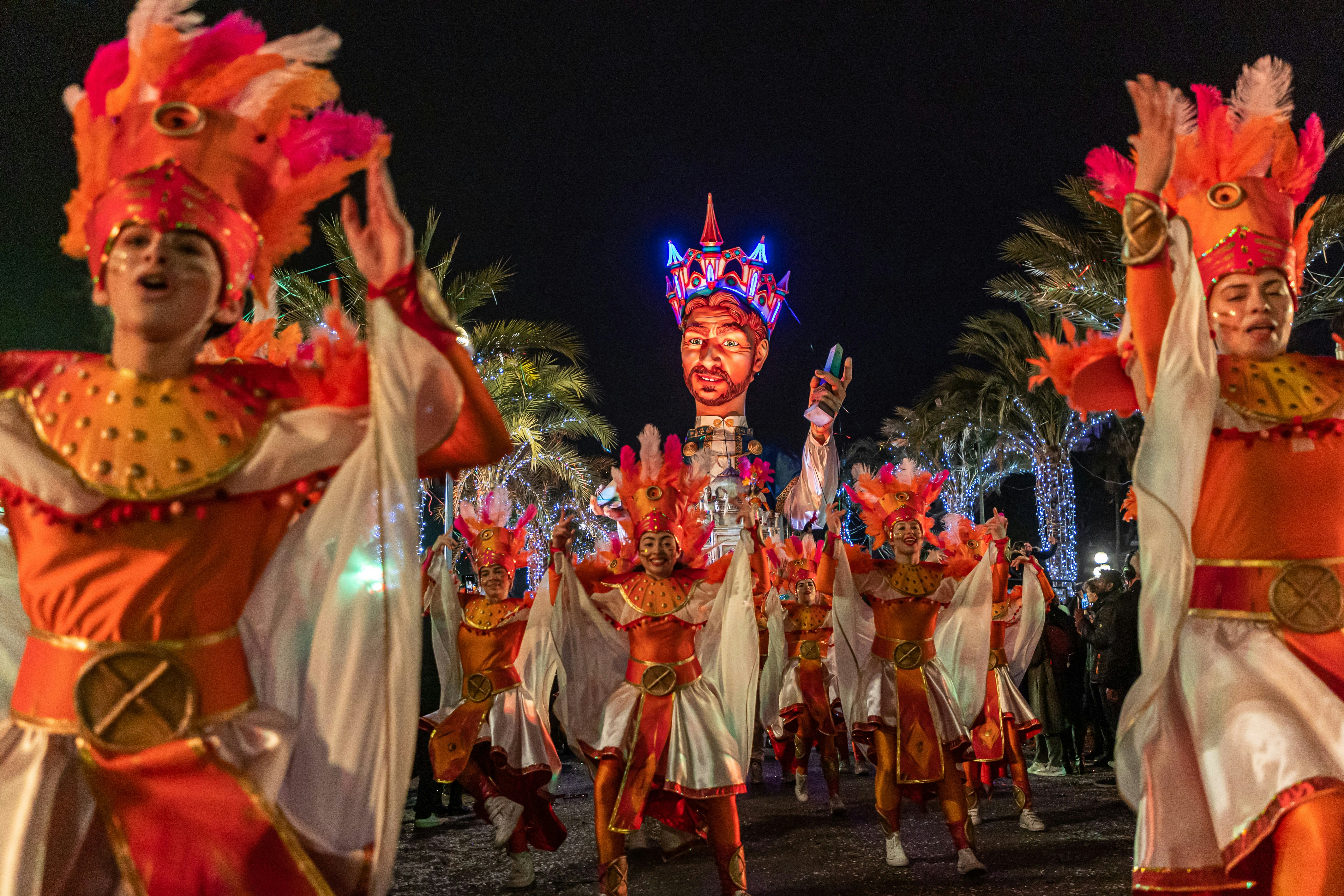
2. Bounce between winter carnivals
The winter months usher in a colorful array of festivals. Carnaval de Nice is one of the biggest such carnivals in France, its origins dating back to 1294. The Fête du Citron in Menton is quirky and fun, with floats made entirely of a variety of citrus fruit. In Villefranche-sur-Mer, the Combat Naval Fleuri is a mock naval battle between traditional wooden boats called pointus, during which local fishermen don traditional Niçois garb and throw flowers into the crowds of onlookers. And farther along the coast, Mandelieu-La Napoule’s La Fête du Mimosa celebrates the traditional blooms, originally from Australia, that have since become a significant part of the economic life of the town.
Planning tip: Check the dates in advance and if you need to purchase a ticket. Some events will allow you to use your smartphone; others will require physical tickets.
3. Explore the islands just off the coast
Don’t just stick to the mainland. The islands and archipelagos off the Riviera are paradisiacal in summer, it’s true – but in winter, fewer tourists mean they’re more accessible. Just a short ferry ride away are several small islands that are beautiful in winter. About 15 minutes off the coast of Cannes, the Îles de Lérins feel completely unspoiled.
The two biggest of the group, Île Ste-Marguerite and Île Saint-Honorat, are covered in pine and eucalyptus forests, with pretty beaches lining their perimeter. On the former, the mysterious and legendary Man in the Iron Mask was once imprisoned; on the latter, a working monastery grows lavender and olives, and produces an exceptional red wine.
Also in the region, the Îles d’Or lie off the coast of Hyères. Porquerolles, the largest, has fabulous hiking and biking. Its tiny village features bars, restaurants and gelato shops surrounding a central square with a pétanque court.

4. Drive the Route du Mimosa
A 130km (81-mile) drive through some of the prettiest villages in the area, the Route du Mimosa is a great way to explore Mandelieu-La Napoule and the entire mimosa-growing region. The trail starts in Bormes-les-Mimosas, one of the most beautiful towns along the Riviera (and the location of one of the French president’s official residences), and ends in Grasse. Along the way, you’ll weave through postcard-pretty villages before making your way through the ancient landscape of the massifs of Tanneron, where Europe’s largest mimosa forest grows rampant. The best time of year to take the trail is from January to March, when you’ll find a riot of color (even in the rare event of overcast skies) and opportunities for hikes of all fitness levels.
Planning tip: For the best experience, plan to take the trail across five days, spending each night at a village along the route.
5. Take to the seas – if you’re brave
Having grown up in Australia, I find it difficult to swim in the Mediterranean before late July or early August –and I refuse to leave summer behind until I’m forced to, in late October. Yet since it takes the sea a while to cool down over winter, even the lowest water temperatures in February rarely dip below 13°C (55°F) – which, I reluctantly admit, is not actually that cold. In fact, an annual end-of-year tradition in Nice is a swim in the days before Christmas. (You’re also welcome to just sit and watch, as I do.)
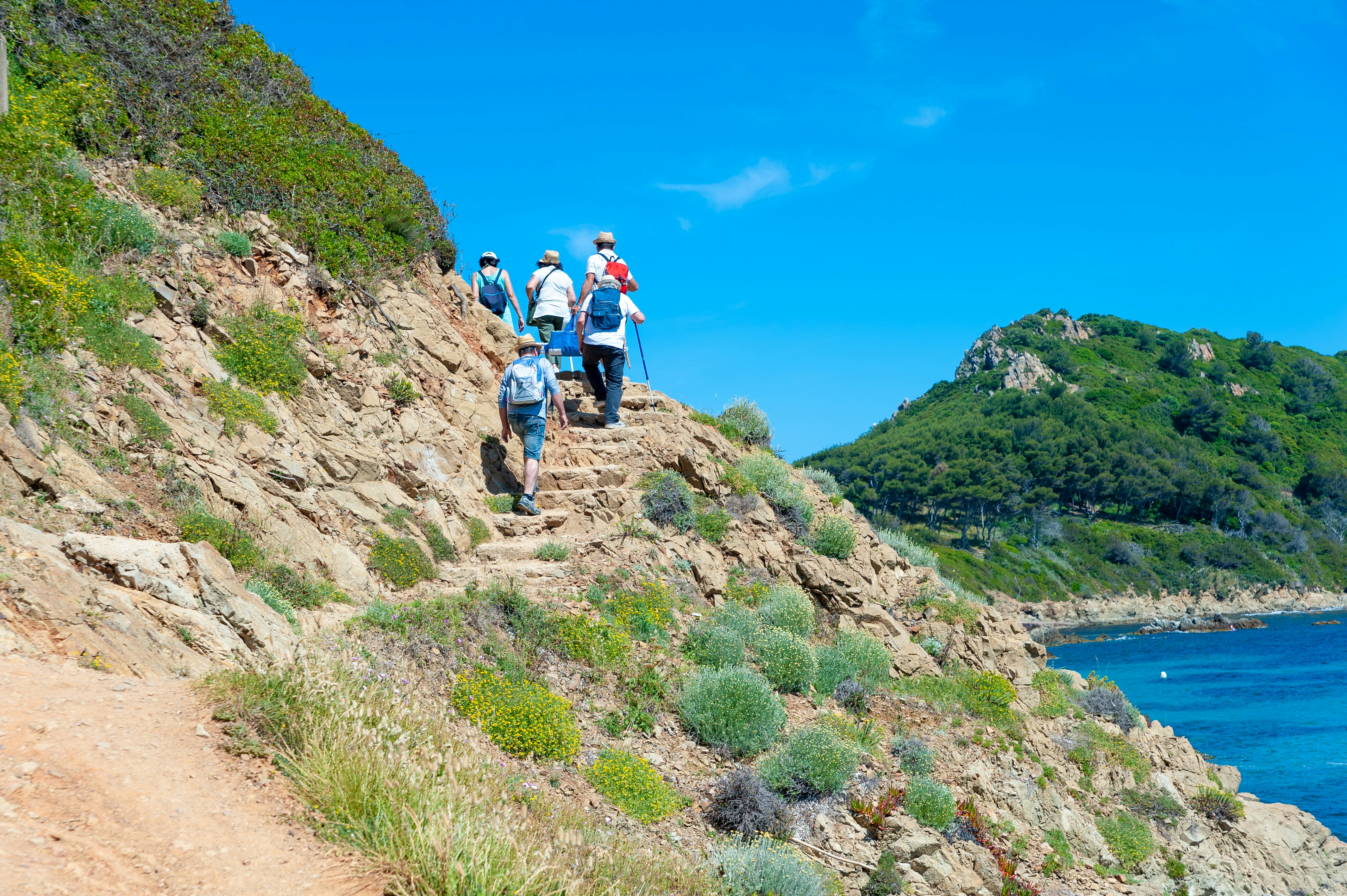
6. Bask in the sunshine along old coastal paths
In lieu of the Christmas swim, consider a hike along the seaside paths tracing the coast. These are made for cooler weather: in summer, the blazing sun can scorch and the number of tourists can overwhelm. In the off months, on the other hand, you’ll be able to seek out the nooks and crannies that make the stops along these paths such fun to explore. The air somehow seems clearer. And basking in the sunlight provides that essential hit of dopamine so necessary this time of year. Countless paths – called sentiers du littoral – thread the shore, taking you along one bay to the next, one village to another. Many of these follow old customs-officer’s paths, worn down from years of patrolling for smugglers.
From Antibes, the Sentier de Tirepoil is a 2-hour walk that shows off spectacular views of the Mediterranean and a few also of the homes of the rich and famous. (One such villa, the Château de la Croë, was once owned by the Duke of Windsor and his wife Wallis Simpson.) Three similar paths start in St-Jean-Cap-Ferrat: the longest, the 90-minute Tour du Cap Ferrat, will take you past the legendary Four Seasons Cap-Ferrat as well as a few tiny coves where you’ll likely spot locals basking in the sun, book in hand.
Nice’s Cap de Nice walk will take you from Port Lympia all the way to Villefranche-sur-Mer, with the best views of the village you’re likely to find. Another favorite walk – one reportedly beloved by Greta Garbo and Winston Churchill – begins at Plage Mala around an extinct volcano, trailing around the cape and ending just before Monaco. Finally, from Roquebrune-Cap-Martin, take the path to Carnolès, where you can stop for a drink at one of the beach bars.
Alternatively, head to the Chemin de Nietzsche by Èze-sur-Mer for an uphill climb to the hilltop village of Èze. The German philosopher himself once walked this route, assembling the thoughts that went into his seminal Thus Spoke Zarathustra along the way.
Planning tip: In bad weather, the local councils will usually opt to close these paths. Check ahead of time to avoid disappointment.
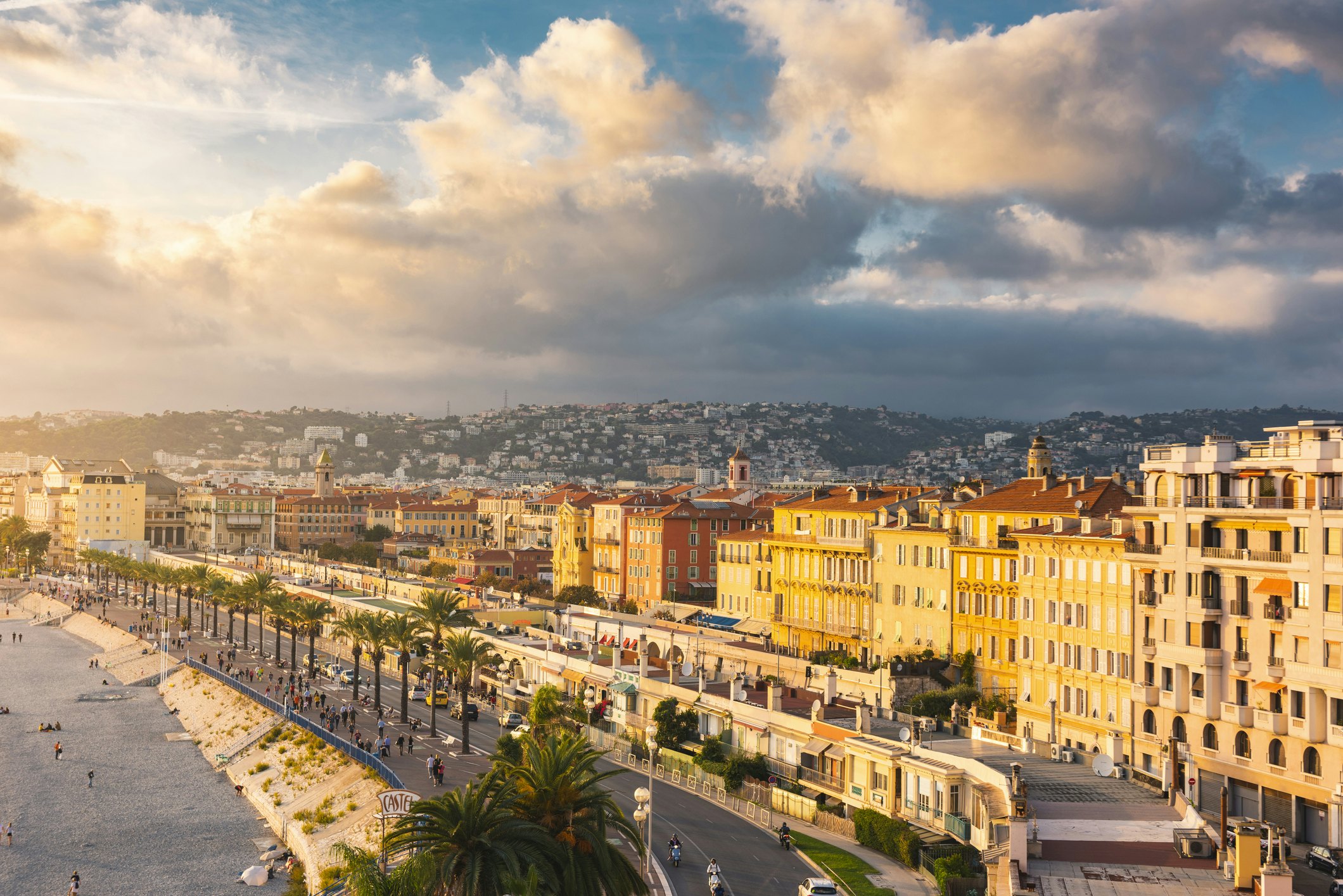
7. Visit the original winter resort
Nice has a storied history as a wintertime resort. In the 18th century, the city’s mild climate attracted wealthy visitors from across Europe, leading to a belle-époque boom in luxury hotels, casinos and grand villas. Nice soon turned into a glamorous destination for the international jet set – especially the English, whose presence gave the city’s famous waterfront boulevard the name Promenade des Anglais. Among the most famous visitors was Queen Victoria, who would stay at the Palais Excelsior Regina and purchase provisions from confectioner Maison Auer and stationery from Papeterie Rontani.
Recently, UNESCO recognized Nice as a Winter Resort Town of Excellence. This designation highlights the city’s blend of history, culture and natural beauty, as well as its commitment to sustainable tourism. In all seasons, visitors can explore the historic Old Town, stroll along the Promenade des Anglais, hit up chic shops or sip on something fancy at one of the city’s many beach bars. Hotel Amour Plage is a personal favorite.

8. Ski through the Alps
Come winter, you can swap your Aperol spritz by the sea for mulled wine on the craggy mountaintops of the Alps. While by no means inexpensive, the ski stations of the Côte d’Azur offer better value than the famous resorts of Mont-Blanc and Courchevel. Isola 2000, Auron and Valberg are the most popular, and offer a range of different terrains for all levels of skill – as well as plenty of opportunities for après ski.
Planning tip: You can book your snow equipment before you arrive, and sometimes at cheaper rates. Go on Google to find nearby rental outfits, and book on their websites a few days before you plan to take to the slopes.

9. Shop for gifts at the Christmas markets
The Côte d’Azur may have more palms than pines, but we do Christmas here very well indeed. Each December, end-of-year celebrations bring seasonal markets to villages up and down the coast. A steaming cup of sweet-spicy vin chaud is a given; you’ll likely also find raclette; smoked salmon; baked potatoes; smoky, grilled saucisse; and a plethora of sweet things – think waffles, chocolat chaud and even churros. These markets are just the place to pick up gifts for loved ones back home, or round out your own Christmas decorations with the handmade options on offer.
Planning tip: With so many options, a little advance planning will go a long way. Nice and Monaco have the biggest markets, with the most options for gourmets and gift seekers. Yet smaller markets, such as those in St-Raphaël and St-Paul-de-Vence, offer that quiet, pretty charm that is the essence of the south of France.
10. Savor seasonal cuisine
By seasonal cuisine, we really just mean cheese. I always know winter has officially hit when my French friends break out their raclette and fondue sets. Few meals are heartier than a serving of bubbly, melted cheese scraped over tiny, tender potatoes and layers of charcuterie. I recommend Tradiswiss in Nice, or Saveurs de Montagne in Auron.
Keep in mind that fondue doesn’t have to consist exclusively of cheese. You’ll find fondue bourguignonne – cubes of raw beef you dip into a small pot of heated oil to cook table-side – at the region’s snow resorts. The beef comes accompanied with a few different sauces: mayonnaise and ketchup are standard, yet might encounter échalote, cheese, Béarnaise, mushroom or even Worcestershire.







